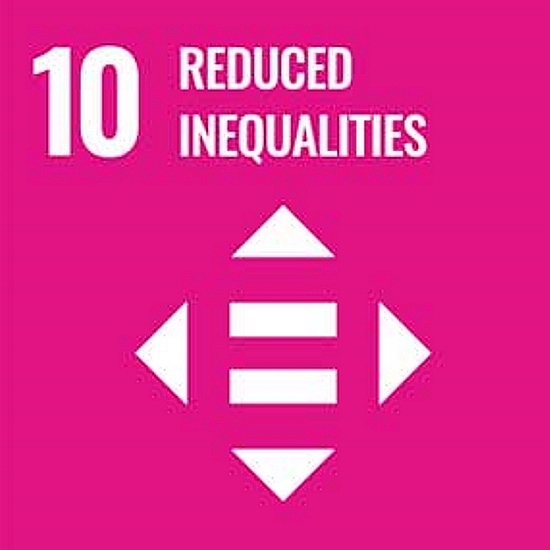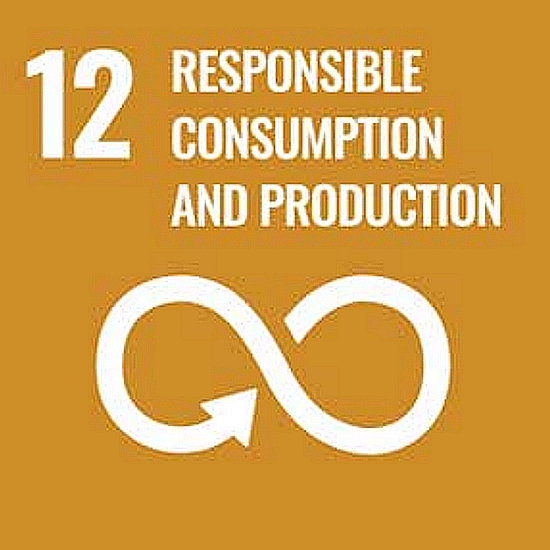Introduction
In keeping with the purpose of the Federal Sustainable Development Act (the Act) to make decision-making related to sustainable development more transparent and accountable to Parliament, the Transportation Safety Board of Canada (TSB) supports the goals laid out in the Federal Sustainable Development Strategy (FSDS) through the activities described in this Departmental Sustainable Development Strategy (DSDS).
The Act also sets out 7 principles that must be considered in the development of the FSDS as well as DSDSs. These basic principles have been considered and incorporated in the TSB’s DSDS.
This departmental strategy integrates efforts to advance Canada’s implementation of the 2030 Agenda National Strategy, supported by United Nations’ Global Indicator Framework and Canadian Indicator Framework targets and indicators. The strategy also now captures United Nations sustainable development goal (SDG) initiatives that fall outside the scope of the FSDS to inform the development of Canada’s Annual Report on the 2030 Agenda and the Sustainable Development Goals.
The Transportation Safety Board of Canada’s sustainable development vision
Within the limits of its resources, the TSB is working with partners to support the 2030 Agenda with a focus on Goal 10 (Reduced inequalities), Goal 12 (Responsible consumption and production), and 13 (Climate action).
Listening to Canadians
As required by the Federal Sustainable Development Act, the TSB has taken into account comments on the draft 2022–2026 FSDS made during the public consultation held from March 11 to July 9, 2022.
Across the submissions received, the TSB identified sustainable development priorities and issues that affect us. As a small department with limited resources, we have chosen to focus on the following areas:
- SDG 13: Measures to combat climate change and recognize socio-economic challenges, emphasizing the close link between social, economic and environmental issuesFootnote 1
- Reconciliation and respect for Indigenous rights and autonomy
- Advancing the circular economy
The TSB took the above-mentioned key priorities and issues into consideration in this DSDS. For example, our procurement plans aim to source products and services that help fight climate change and promote purchases from Indigenous suppliers, and we prioritize the disposal of surplus goods via GCtransfer and GCsurplus.
Please find more information on the FSDS public consultation and its results in the FSDS Consultation Report.
The Transportation Safety Board of Canada’s commitments
Goal 10: Advance reconciliation with Indigenous Peoples and take action on inequality
Context
The TSB purchases goods and services to support its operations. It uses its purchasing power to promote the financial health of Indigenous businesses, enabling them to participate more fully in the Canadian economy and thus contribute to the development of First Nations, Inuit and Métis communities.
Theme: Advancing reconciliation with First Nations, Inuit and the Métis communities
Target
Although the strategic target rests with the Minister of Justice and Attorney General of Canada, the action taken by the TSB supports this target:
Between 2023 and 2026, and every year on an ongoing basis, develop and table annual progress reports on implementing the United Nations Declaration on the Rights of Indigenous Peoples Act (Minister of Justice and Attorney General of Canada)
Implementation strategies to support the target
This section covers implementation strategies that support the goal “Advance reconciliation with Indigenous Peoples and take action on equality” but not a specific FSDS target.
| Implementation strategy | Departmental action | Performance indicator; Starting point; Target | How the departmental action contributes to the FSDS goal and target and, where applicable, to Canada’s 2030 Agenda National Strategy and SDGs |
|---|---|---|---|
Other |
Program: Promoting the purchase of goods and services from Indigenous businesses |
Performance indicators:
Starting point:
Targets:
|
Canada’s 2030 Agenda National Strategy: Building vibrant Indigenous communities through economic reconciliation SDG 10: Provides sales opportunities for small and medium-sized Indigenous businesses with access to the Indigenous Growth Fund |
Initiatives advancing Canada’s 2030 Agenda and SDG 10 – Reduced inequalities
The following initiatives demonstrate how the TSB’s programming supports the 2030 Agenda and the SDGs, supplementing the information outlined above.
| Planned initiatives | Associated domestic targets or ambitions and/or global targets |
|---|---|
Promote procurement from small- and medium-sized Indigenous businesses. |
Reduce income disparity between and among diverse groups of people, including Indigenous Peoples and non-Indigenous Canadians.Footnote 2 |
Goal 12: Reduce waste and transition to zero-emission vehicles
Context
Over the past few years, the TSB has begun to reduce the movable assets in its inventory and has learned to use the services offered by central agencies for interdepartmental asset transfer and for responsible disposal. The TSB will build on this progress to further develop its contribution to the circular economy.
Theme: Federal leadership on responsible consumption
Target
By 2030, the Government of Canada will divert from landfill at least 75% by weight of non-hazardous operational waste (All Ministers)
| Implementation strategy | Departmental action | Performance indicator; Starting point; Target | How the departmental action contributes to the FSDS goal and target and, where applicable, to Canada’s 2030 Agenda National Strategy and SDGs |
|---|---|---|---|
Maximize diversion of waste from landfill |
Program: Use compliant suppliers for disposal of operational waste and surplus non-reusable goods |
Performance indicators:
Starting point:
Targets:
|
Canada’s 2030 Agenda National Strategy – With the support of its suppliers, the TSB encourages private sector companies to contribute to achieving the SDGs by requiring them to meet environmental criteria. SDG 12 – Responsible waste management supports Canada’s ambition to support the reduction and sound management of chemicals and waste, and the reduction of food loss and waste |
Target
By 2030, the Government of Canada will divert from landfill at least 90% by weight of all construction and demolition waste (All Ministers).
| Implementation strategy | Departmental action | Performance indicator; Starting point; Target | How the departmental action contributes to the FSDS goal and target and, where applicable, to Canada’s 2030 Agenda National Strategy and SDGs |
|---|---|---|---|
Since office space is provided by PSPC and its Engineering Laboratory is managed by PSPC, the TSB does not generate construction and demolition waste. |
Not applicable |
Not applicable |
Not applicable |
Target
The Government of Canada’s procurement of goods and services will be net-zero emissions by 2050, to aid the transition to a net-zero, circular economy (All Ministers)
| Implementation strategy | Departmental action | Performance indicator; Starting point; Target | How the departmental action contributes to the FSDS goal and target and, where applicable, to Canada’s 2030 Agenda National Strategy and SDGs |
|---|---|---|---|
Transform the federal light-duty fleet |
Program: Purchase plug-in hybrid or electric vehicles (zero-emission vehicles – ZEVs) when available for our operational needs. |
Performance indicator: Percentage of hybrid or electric vehicles in fleet purchases Starting point: One out of every two vehicles purchased is a ZEV Targets:
|
Canada’s 2030 Agenda National Strategy. The TSB supports the ambition: Canadians consume in a sustainable manner,Footnote 3 leading by example SDG 12 – TSB target is in line with Canada’s interim targets for the purchase of ZEVs (at least 20% of purchases by 2026, and 60% by 2030) |
Program: Guarantee access to charging infrastructure in facilities where a ZEV is assigned |
Performance indicator: Offices where a ZEV is assigned have at least one charging station compatible with the vehicle Starting point: None of the regional offices has a charging station Target: Install a charging station in the parking lot at the regional office to support regular ZEV use. |
*This measure is contingent on the previous one to ensure its success. It therefore supports the same ambitions of the 2030 Agenda and the SDGs: Canada’s 2030 Agenda National Strategy: The TSB supports the ambition “Canadians consume in a sustainable manner,”Footnote 4, leading by example SDG 12: TSB target is in line with Canada’s interim targets for the purchase of ZEVs (at least 20% of purchases by 2026, and 60% by 2030) |
|
Strengthen green procurement criteria |
Program: Green procurement training |
Performance indicator: Percentage of specialists in procurement and material management who have completed training on green procurement Starting point: 100% of procurement specialists and 50% of acquisition cardholders have completed the Green Procurement training Target: 100% of procurement specialists and 100% of acquisition cardholders have completed Green Procurement training within six months of obtaining purchasing authority. |
Canada’s 2030 Agenda National Strategy: By raising awareness among purchasers, the TSB supports the creation of partnerships with organizations to promote the implementation of the SDGs in the business community, notably through corporate social responsibility initiatives. SDG 12: The Government of Canada is working to ensure sustainable consumption and production by integrating sustainability and life-cycle assessment principles in procurement policies and practices through the Greening Government Strategy |
Implementation strategies to support the goal
This section is for implementation strategies that support the goal “Reduce waste and transition to zero-emission vehicles” but not a specific FSDS target.
| Implementation strategy | Departmental action | Performance indicator; Starting point; Target | How the departmental action contributes to the FSDS goal and target and, where applicable, to Canada’s 2030 Agenda National Strategy and SDGs |
|---|---|---|---|
Other |
Program: Acquire new types of furniture and dispose of surplus furniture through GCtransfer and GCsurplus. |
Performance indicator: Quantity of furniture pieces reused via GCtransfer or GCsurplus. Starting point:
Targets:
|
Canada’s 2030 Agenda National Strategy: Invest in the SDGs through circular economy practices SDG 12: The Government of Canada is working to ensure sustainable consumption and production by integrating sustainability and life-cycle assessment principles in procurement policies and practices through the Greening Government Strategy |
Goal 13: Take action on climate change and its impacts
Context
The TSB is working with Public Services and Procurement Canada to reduce greenhouse gas emissions from its existing facilities and is participating in developing future carbon-net-zero infrastructure to replace its Engineering Laboratory and Head Office. It continues to take a critical look at all aspects of its operations that could lead to improved green performance.
Theme: Federal Leadership on greenhouse gas emissions reductions and climate resilience
Target
The Government of Canada will transition to net-zero carbon operations for facilities and conventional fleets by 2050 (All Ministers)
| Implementation strategy | Departmental action | Performance indicator; Starting point; Target | How the departmental action contributes to the FSDS goal and target and, where applicable, to Canada’s 2030 Agenda National Strategy and SDGs |
|---|---|---|---|
Implement the Greening Government Strategy through measures that reduce greenhouse gas emissions, improve climate resilience, and green the government’s overall operations |
Program: Collaborate with PSPC real property services when renewing occupancy agreements to relocate to facilities that meet climate resiliency goals and support greening of operations while meeting TSB operational needs. |
Performance indicator: Sites that meet modern climate resilience standards and are optimized for greening operations while meeting TSB operational needs. Starting point: Most TSB sites have been occupied for a long time, lack state-of-the-art green operations and are not adapted to hybrid work conditions. Target: To be determined by PSPC as custodian of the real property utilized by the TSB. The TSB will work with PSPC to identify appropriate locations and adopt innovative practices. |
Canada’s 2030 Agenda National Strategy: Take swift action to reduce greenhouse gas emissions, improve climate resilience and protect our natural environment. SDG 13: As a collaborative occupant department with PSPC in the search for appropriate space, the TSB aligns its goals with the national goal that Canada be a world leader in net-zero emissions, resilient and green government operations.Footnote 5 |
Modernized through net-zero-carbon buildings |
Program: The TSB participates as a client/occupant department in the Laboratories Canada TSTS initiative. |
Performance indicator: New buildings are net-zero carbon Starting point: The TSB occupies and uses facilities that were built with no consideration for net-zero carbon targets. Target: Occupy one net-zero-carbon building by 2030 |
Canada’s 2030 Agenda National Strategy: Innovating for the SDGs: TSB enters into partnerships to support innovation projects with co-benefits that support the SDGs. SDG 13: Since the TSB cannot meet the target with its own resources, it is partnering with NRC and PSPC on a major net-zero-carbon build to help achieve the national goal of Canada being a world leader in net-zero, resilient and green government operations.Footnote 6 |
Apply a greenhouse gas reduction life-cycle cost analysis for major building retrofits. |
Program: Not applicable – No major retrofit is planned for TSB buildings |
Not applicable |
Not applicable |
Target
The Government of Canada will transition to climate-resilient operations by 2050 (All Ministers)
| Implementation strategy | >Departmental action | Performance indicator; Starting point; Target | How the departmental action contributes to the FSDS goal and target and, where applicable, to Canada’s 2030 Agenda National Strategy and SDGs |
|---|---|---|---|
Reduce risks posed by climate change impacts to federal assets, services and operations |
Program: Business continuity plan |
Performance indicator: Business plans include analysis of risks posed by climate change impacts Starting point: Risk analysis of climate change impacts included in analysis matrix for contingency plans Target: Risk analysis of climate change impacts included in regular TSB operations |
Canada’s 2030 Agenda National Strategy: Demonstrate leadership to build a sustainable and climate-resilient future. SDG 13: The TSB will contribute to Canada’s national goal of being a world leader in resilient government operations. |
Integrating sustainable development
The TSB will continue to ensure that its decision-making process considers the goals and targets of the FSDS as part of the SEA process. The SEA of a proposed policy, plan or program includes an assessment of its impact on the environment, including the relevant FSDS goals and targets.
Public statements on the results of TSB assessments are published on the TSB website when an initiative that has undergone an SEA is announced. The purpose of the public statement is to demonstrate that the environmental impacts of the approved policy, plan or program, including the implications for achieving FSDS goals and targets, have been considered during proposal preparation and decision-making.


